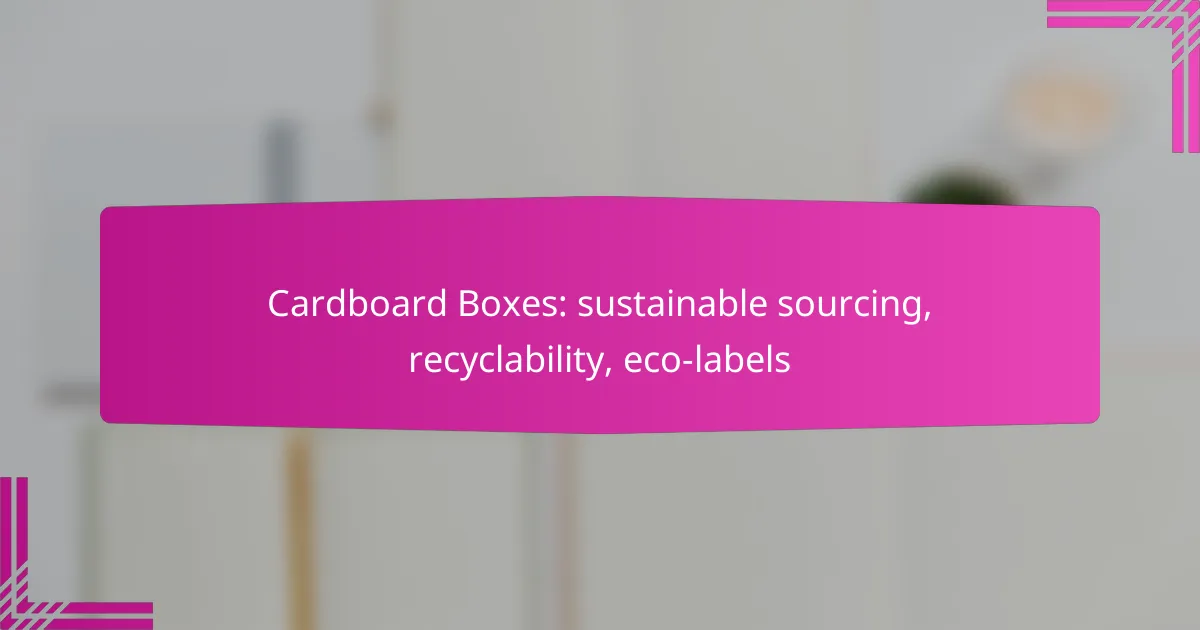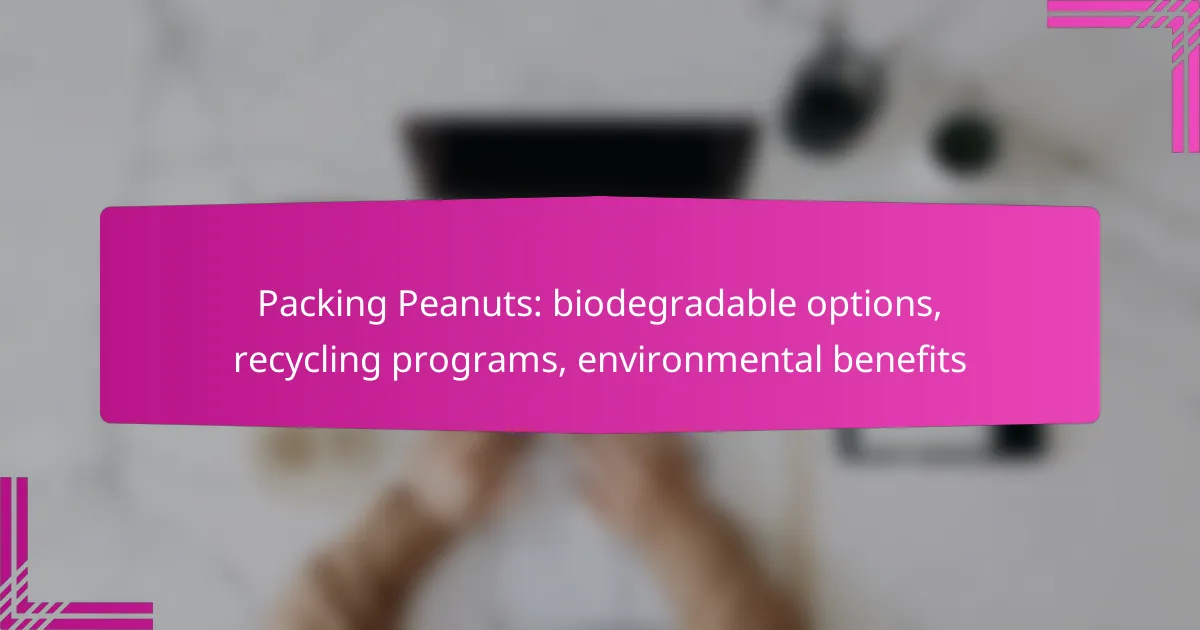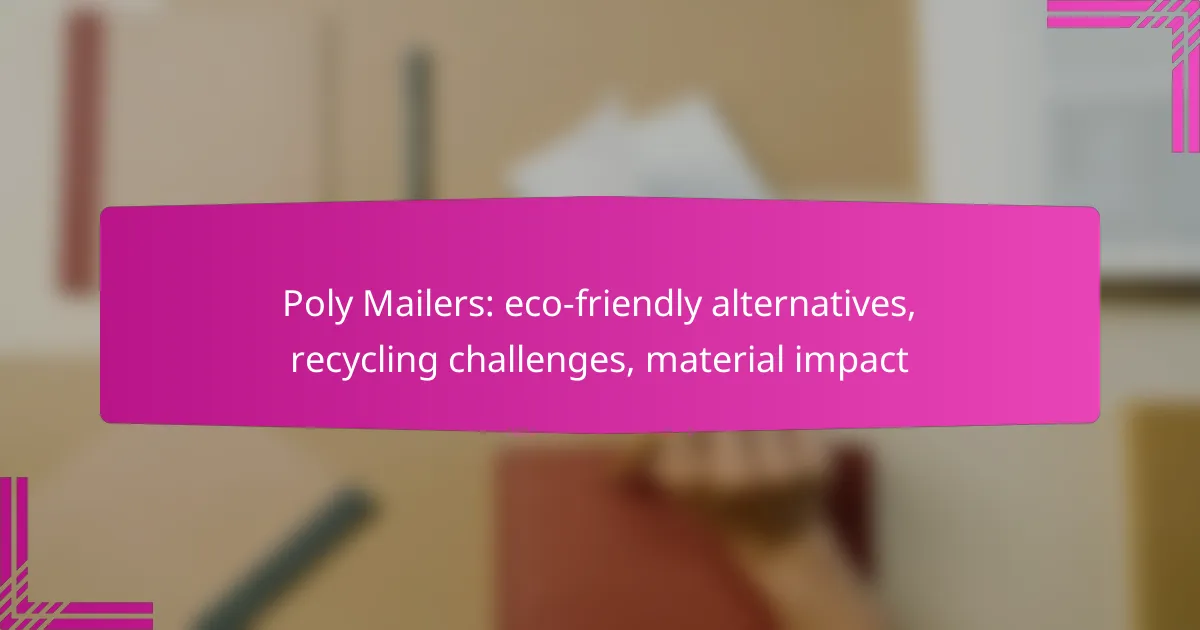Choosing sustainable cardboard boxes is essential for promoting environmental conservation, particularly in New Zealand. It’s important to select products made from responsibly sourced materials that are also highly recyclable, depending on local facilities. Look for eco-labels that signify sustainable sourcing and recyclability, ensuring that your packaging choices contribute positively to the planet.
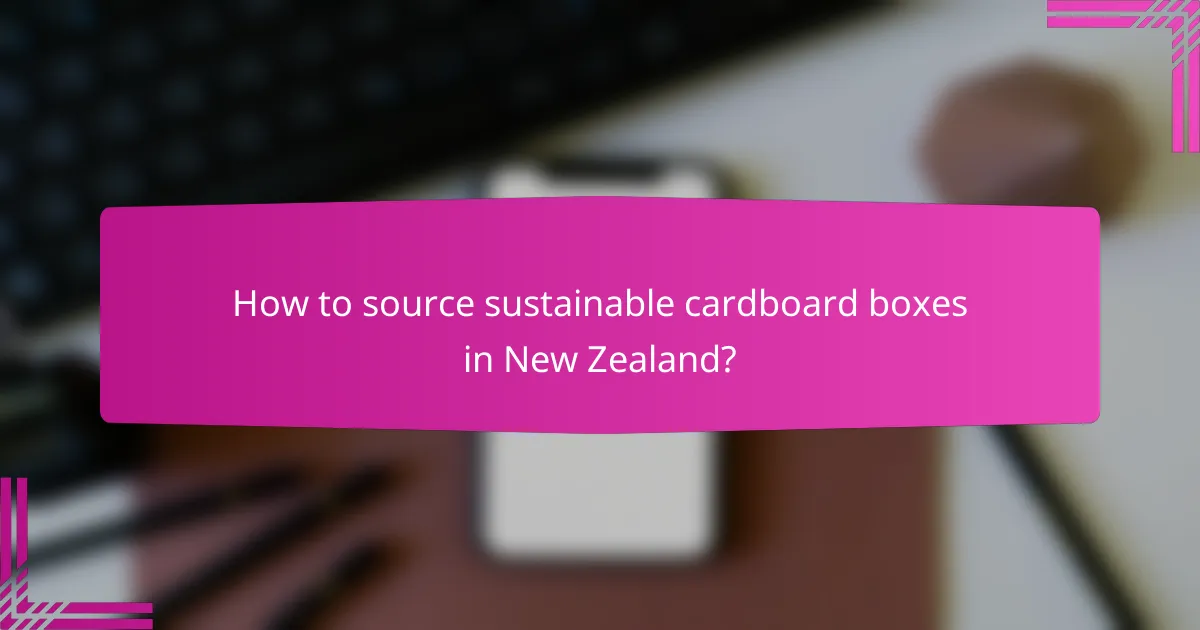
How to source sustainable cardboard boxes in New Zealand?
Sourcing sustainable cardboard boxes in New Zealand involves selecting products made from responsibly sourced materials and ensuring they are recyclable. Look for suppliers who prioritize eco-friendly practices and certifications that indicate sustainability.
Local suppliers with eco-friendly practices
New Zealand has several local suppliers committed to eco-friendly practices in cardboard box production. Companies like Visy and CartonCloud focus on using recycled materials and minimizing waste during manufacturing. When choosing a supplier, inquire about their sourcing methods and environmental policies.
Additionally, consider smaller businesses that prioritize sustainability, as they often implement innovative practices that reduce their environmental impact. Supporting local suppliers not only benefits the environment but also boosts the local economy.
Certification standards for sustainable sourcing
Look for cardboard boxes that carry certifications such as FSC (Forest Stewardship Council) or PEFC (Programme for the Endorsement of Forest Certification). These labels ensure that the materials used are sourced from sustainably managed forests. Certifications provide assurance that the products meet high environmental and social standards.
In New Zealand, the Environmental Choice NZ label is another important certification that indicates a product’s eco-friendliness. Always check for these certifications when sourcing to ensure you are making responsible choices.
Impact of sourcing on carbon footprint
The sourcing of cardboard boxes significantly affects their carbon footprint. Boxes made from recycled materials generally have a lower carbon impact compared to those made from virgin materials. By opting for suppliers that utilize recycled content, businesses can contribute to reducing greenhouse gas emissions.
Additionally, consider the transportation distance of the cardboard boxes. Sourcing locally can further minimize the carbon footprint associated with shipping. Evaluate both the material source and logistics to make the most sustainable choices possible.
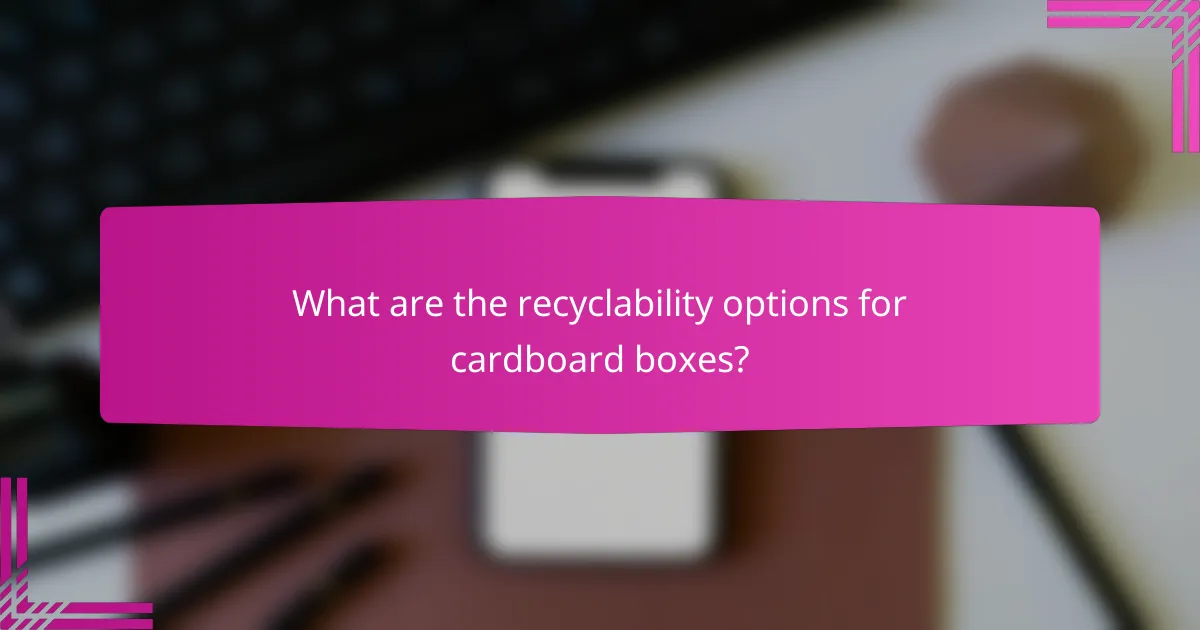
What are the recyclability options for cardboard boxes?
Cardboard boxes are highly recyclable, with most options allowing for repurposing into new products. The recyclability of cardboard depends on its condition and local recycling facilities, which can vary significantly by region.
Recycling processes in New Zealand
In New Zealand, cardboard recycling involves several key steps. First, consumers can drop off clean, dry cardboard at designated recycling stations or participate in curbside collection programs. The collected cardboard is then transported to recycling facilities where it is sorted, pulped, and processed into new cardboard products.
New Zealand has implemented a strong recycling framework, with many councils promoting awareness and providing resources to encourage proper disposal. The country aims for a high recycling rate, often exceeding 80% for cardboard materials.
Benefits of recycling cardboard
Recycling cardboard offers numerous environmental benefits. It reduces landfill waste, conserves natural resources, and lowers greenhouse gas emissions associated with production. Additionally, recycling cardboard can save energy, as producing new cardboard from recycled materials typically requires less energy than using virgin materials.
Economically, recycling cardboard can create jobs in the recycling and manufacturing sectors, contributing to a circular economy. Businesses that prioritize recycling can also enhance their sustainability credentials, appealing to environmentally conscious consumers.
Challenges in cardboard recycling
Despite its benefits, cardboard recycling faces several challenges. Contamination from food residues or mixed materials can hinder the recycling process, leading to lower quality recycled products. It’s crucial for consumers to ensure that cardboard is clean and dry before disposal.
Additionally, fluctuations in market demand for recycled materials can impact the viability of recycling programs. In some cases, local facilities may struggle with capacity, leading to increased costs or limited recycling options. Awareness and education about proper recycling practices are essential to overcoming these challenges.
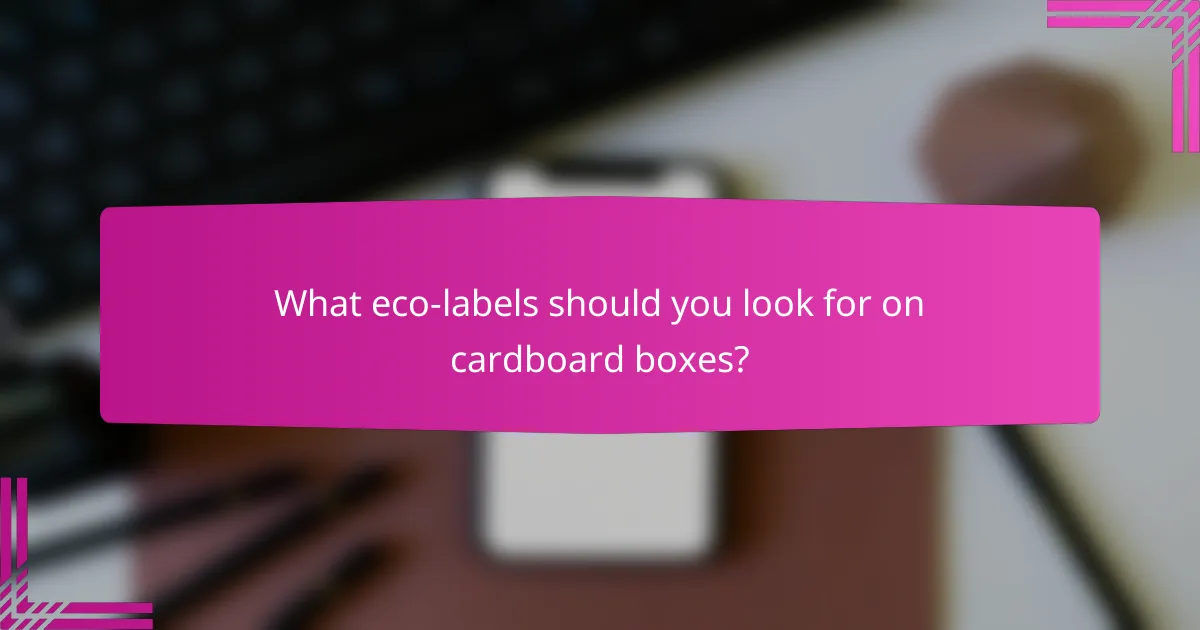
What eco-labels should you look for on cardboard boxes?
When selecting cardboard boxes, look for eco-labels that indicate sustainable sourcing and recyclability. These labels help ensure that the materials used are responsibly sourced and can be recycled effectively, contributing to environmental conservation.
FSC certification details
The Forest Stewardship Council (FSC) certification signifies that the cardboard is sourced from responsibly managed forests. This certification ensures that the wood used meets strict environmental and social standards, promoting sustainable forestry practices.
When choosing FSC-certified boxes, check for the FSC logo on the packaging. This logo indicates that the product has been verified through a rigorous certification process, ensuring that it supports forest conservation and the rights of local communities.
Recycled Content Certification
Recycled Content Certification indicates the percentage of recycled materials used in the cardboard. Boxes with higher recycled content reduce the demand for virgin materials and lower overall environmental impact.
Look for labels such as the Recycling Symbol or the “Made with Recycled Content” mark. These labels help you assess the sustainability of the product, with many boxes containing anywhere from 30% to 100% recycled materials.
Other relevant eco-labels
In addition to FSC and recycled content certifications, other eco-labels can provide valuable information about cardboard boxes. Labels like the Cradle to Cradle certification and the Green Seal mark indicate that the product meets high environmental and health standards.
Consider checking for certifications that focus on specific attributes, such as compostability or low emissions during production. These labels can help you make more informed choices that align with your sustainability goals.

How do cardboard boxes compare to other packaging materials?
Cardboard boxes are often more sustainable than many other packaging materials, such as plastic or styrofoam. They are biodegradable, recyclable, and can be sourced from renewable resources, making them a preferred choice for environmentally conscious consumers and businesses.
Environmental impact comparison
When comparing the environmental impact of cardboard boxes to other packaging options, cardboard generally has a lower carbon footprint. It is made from renewable materials and can decompose naturally within a few months in the right conditions. In contrast, plastic can take hundreds of years to break down, contributing significantly to landfill waste.
Additionally, cardboard is highly recyclable, with many facilities able to process it efficiently. This contrasts with materials like styrofoam, which are often not accepted in curbside recycling programs. Choosing cardboard can help reduce overall waste and promote a circular economy.
Cost-effectiveness of cardboard boxes
Cardboard boxes are typically cost-effective for businesses, especially when considering bulk purchasing. Prices can vary based on size and quality, but they often remain competitive compared to plastic and metal alternatives. Many companies find that the lower production costs and ease of recycling make cardboard a financially sound choice.
Moreover, the lightweight nature of cardboard reduces shipping costs, which can further enhance its cost-effectiveness. Businesses should consider not only the initial purchase price but also the long-term savings associated with waste management and recycling when selecting packaging materials.

What are the future trends in sustainable cardboard packaging?
The future of sustainable cardboard packaging is shaped by innovations in materials, regulatory changes, and evolving consumer preferences. Companies are increasingly adopting eco-friendly practices to meet both environmental standards and customer demand for sustainable options.
Innovations in biodegradable cardboard
Biodegradable cardboard is gaining traction as manufacturers explore new materials that break down more quickly and safely in the environment. Innovations include the use of plant-based adhesives and coatings that enhance the cardboard’s functionality while maintaining its eco-friendly profile.
For example, some companies are developing cardboard that incorporates mycelium, a natural fungus, which can decompose within weeks after disposal. This shift not only reduces waste but also minimizes the carbon footprint associated with traditional cardboard production.
Emerging regulations in New Zealand
New Zealand is implementing stricter regulations aimed at reducing plastic waste, which directly impacts cardboard packaging standards. The government is encouraging businesses to adopt sustainable practices, including the use of recyclable and biodegradable materials.
Companies may need to comply with new labeling requirements that clearly indicate the recyclability of their packaging. This shift aims to promote transparency and help consumers make informed choices about the products they purchase.
Consumer preferences shifting towards sustainability
There is a noticeable shift in consumer preferences towards sustainable packaging solutions, with many shoppers actively seeking out products that use eco-friendly materials. This trend is driven by increased awareness of environmental issues and a desire to support brands that prioritize sustainability.
Businesses that adopt sustainable cardboard packaging may find a competitive advantage, as consumers are often willing to pay a premium for products that align with their values. Companies should consider highlighting their sustainable practices in marketing efforts to attract this growing demographic.
